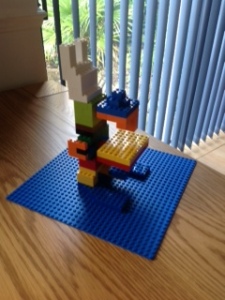Well, what a long while it’s been since my last blog post! Things have been pretty busy here and I had to put the blogging on hold temporarily – for a variety of reasons, both personal and professional. I emerged from DPhil thesis hand-in last month, and the viva – at 38 weeks pregnant – followed 2 weeks later. Since then, it’s been great having some time to delve back into the various strands of the Open Science Training Initiative and see where things need to head over the coming year, and as you’ll see from my first subject, there’s good scope for making plans right now…
Funding from the Shuttleworth Foundation

The eagle-eyed amongst you may have noticed the addition of the Shuttleworth Logo to the OSTI website in December 2015. Great news!
Perhaps the most significant piece of news is that OSTI was awarded a Shuttleworth Flash Grant in December 2014. This is really exciting news, as the project has been run without funding since my Panton Fellowship concluded back in Spring 2013. Many thanks to Peter Murray-Rust for nominating us in the first place 🙂 Thus far, the grant has helped to manage some of our basic running costs (including, for example, domain renewal) and we have a few other ideas in the pipeline for channelling the money into various projects over the coming months.
Perhaps inevitably, there are too many strands on the current to-do list to mention everything here. Some of the projects under construction include a redesign of our website and materials to improve the experience for dyslexic and sight-impaired users; provision of interactive spaces on our website, allowing those who’ve run OSTI- or RBL-style courses to share their experiences and offer advice; and a continued push for translation of the main teaching materials into other languages. I’ll let you know how these various projects progress!
OSTI’s addition to Mozilla Teaching Resources
Our Learning With L ego course, which made its debut at SpotOn London in November 2013, is about to become available as a stand-alone workshop as part of Mozilla’s Lo-Fi, No-Fi teaching kit. The kit aims to deliver courses and exercises which are suitable for teaching useful skills for the web, and training in technical and scientific thinking, but which can be successfully delivered in an environment with low or no Internet connectivity.
ego course, which made its debut at SpotOn London in November 2013, is about to become available as a stand-alone workshop as part of Mozilla’s Lo-Fi, No-Fi teaching kit. The kit aims to deliver courses and exercises which are suitable for teaching useful skills for the web, and training in technical and scientific thinking, but which can be successfully delivered in an environment with low or no Internet connectivity.

Lego microscope from the “Learning With Lego” course, made using correct instructions. Photo by Sophie Kay, licensed under a Creative Commons Attribution Licence, CC-BY-4.0
If you’ve been keeping an eye on the News section of the OSTI website, you’ll be aware this this one’s been waiting in the wings for a while. I’m glad to say that it’s now up and running – the page still has to go through some final checks before its listing is added to the Lo-Fi No-Fi page proper, but a version is already available on the Mozilla website. Click here for a nosy at the Mozilla-fied page of our Learning With Lego course!
The downloadable instructions are the same as those used for the inaugural workshop, but were previously only available via the OSTI GitHub repository. Hopefully this neatly-packaged set of instructions will encourage more of you to give Learning With Lego a try, whether that’s with high school students, undergraduates or academic researchers.
The 2014-15 academic year has also seen Learning With Lego implemented at Royal Holloway, University of London, to train their first-year mathematics undergraduates in technical writing, science communication and repeatability/reproducibility. Each weekly instance of the course sees the use of full rotation based learning: not only does each group have to build the microscope model from faulty instructions and critique its description, but they must also create a Lego model of their own design, fully described with accompanying instructions. These new designs are uploaded onto a database for further use and assessment in future sessions.
Encouragingly, the success of the Royal Holloway scheme has already drawn interest from their Educational Development team, who will be discussing it with the arts and humanities divisions. This may even lead to non-scientific versions of the course in the future and I’m looking forward to seeing where this leads over the coming year.
Accessible Materials – An OSTI For Everyone
This is a really important area, and one I’ve been wanting to address for quite some time (alas, running OSTI as a one-woman team makes it pretty much impossible for me to do everything at once!). The first round of OSTI teaching materials was constructed for the pilot scheme which, as none of the participants required adapted materials, didn’t account for users with specific needs.
It’s high time this was remedied though, and so I’m currently developing modified versions of the OSTI materials which are suitable for sight-impaired and dyslexic users. As part of this endeavour, I’m currently in touch with the British Dyslexia Association and the RNIB to discuss how the website and educational materials in their present form need to be adapted. Both organisations also provide web pages and advice sheets to guide educators in developing suitably adapted educational materials, so I’ll also be using those to shape refinements. Hopefully we’ll see some progress here in the near future.
This definitely calls for a more specific blog post sometime soon – including a bit of a call to action for those amongst you who can offer any personal insights or advice into what developments you’d like to see in the materials, where we’re falling down at the moment, and maybe even give us an appraisal of the new materials once they’re available!
Efficacy of Rotation-Based Learning
One thing I’d love to achieve with OSTI in 2015 is to gather extensive data on the efficacy of Rotation Based Learning (RBL) in a variety of settings. For example:
- What does it achieve for student motivation?
- How easy is it to implement for a given subject?
- What are the tangible benefits of this approach, and are they maintained after the conclusion of the course?
Of course, instances such as the OSTI pilot scheme and the recent Learning With Lego series at Royal Holloway have provided partial answers to these questions, but much more data is required. Running a one-hour workshop with the RBL teaching pattern is a completely different thing to integrating it into a two-week academic course. Not only do those two extremes involve completely different settings, but the attendee demographic will differ and the subject-specific context may interface more or less well with the RBL structure accordingly.
I’d like to know more, not just about these two extrema, but about everything in between. Please get in touch (sophie[at]opensciencetraining.com) if you’ve already run an RBL-style course of any kind, or if you’re thinking of running one. I’d really appreciate any on-the-ground insights you can provide into how you found it!
And so…
I’ll hold it there for today, otherwise this post is going to get far too long. But all being well, I’ll provide another progress update soon – and in any case, I’ll be providing a summary of how OSTI has put the Shuttleworth Funding to good use in due course, as per the grant’s requirements. As always though, don’t hesitate to get in touch if you’d like to discuss running an OSTI/RBL course of your own, whatever the subject area, setting or timespan!

